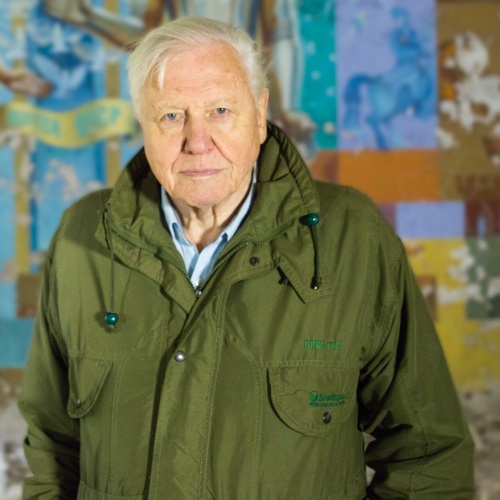WELLINGTON, New Zealand — Antarctica’s Ross Sea is often
described as the most isolated and pristine ocean on Earth, a place
where seals and penguins still rule the waves and humans are about as
far away as they could be. But even there it has proven difficult, and
maybe impossible, for nations to agree on how strongly to protect the
environment.
The United States and New Zealand have spent two
years trying to agree on an Alaska-sized marine sanctuary where fishing
would be banned and scientists could study climate change. U.S.
Secretary of State Hillary Rodham Clinton took a strong interest in the
outcome, regularly prodding diplomats, and New Zealand recently sent a
delegation to Washington to reach a tentative deal.
That compromise, over a region that accounts for less
than 2 percent of New Zealand’s fishing industry, flopped this month
when senior New Zealand politicians rejected it behind closed doors.
The U.S. and New Zealand have now sent competing
plans to the 25 countries that meet annually each October to decide the
fate of Antarctica’s waters. Their inability to agree greatly increases
the chances that nothing will get done.
Evan Bloom, director of the U.S. State Department’s
Office of Ocean and Polar Affairs, said the U.S. put a great deal of
effort into its reserve proposal because it believes the Ross Sea is the
best place on Earth for scientists to carry out studies away from the
influence of mankind.
“If you can’t do it in Antarctica, where can you do it?” said Bloom.
Both countries advocated for marine sanctuaries. The
differences between the two plans seem small on a map, but they center
on the areas of the sea where marine life is most abundant.
The U.S. does not have fishing interests in the Ross
Sea, though fish caught there often end up in high-end American
restaurants, marketed as Chilean sea bass.
The species is actually an ugly creature called the
Antarctic toothfish. Fishermen from New Zealand, South Korea, Russia and
other nations have been catching them in the Ross Sea since the 1990s.
They use lines that can stretch more than a mile to catch about 100,000
of them a year.
The U.S. aimed to reach an agreement with a nation
that fishes the Ross Sea in hopes it would lead to a broader deal to
protect marine habitats there.
New Zealand wanted to minimize disruption to its
fisheries, but also wanted to burnish its conservation credentials. The
country not only prides itself as an environmental leader, but it also
makes money by marketing its clean, green image to trading partners and
tourists. And it has criticized other nations’ environmental records at
sea, particularly nations that allow whaling.
Clinton urged diplomats to craft a deal. When she
visited the Cook Islands last month, she described the Ross Sea as “one
of the last great marine wilderness areas on the planet” and said the
U.S. was working with other countries, “in particular New Zealand,” to
establish protected areas. Murray McCully, New Zealand’s foreign affairs
minister, echoed her comments.
Late last month, senior New Zealand diplomat Gerard
van Bohemen led a team to Washington that spent four days grinding out
the details of a compromise. After he brought the proposal back to New
Zealand’s ruling National Party, its senior Cabinet of lawmakers met in a
closed session and rejected it.
Exactly why, they’re not saying. Van Bohemen and Cabinet minister Steven Joyce declined to give interviews.
McCully also declined to discuss what happened,
although he said in an email that New Zealand will keep working closely
with the Americans.
The Ross Sea fishery is small on a global scale,
worth about $60 million per year. The New Zealand Seafood Industry
Council says New Zealand’s Ross Sea catch accounts for just $16 million
of a national industry worth over $1 billion.
But council spokesman Don Carson said New Zealand
relies on dozens of species being fished in dozens of places. “None of
them are huge, but they are very diverse, and we are keen not to lose
any of them,” he said.
Carson said the Ross Sea is being fished conservatively and sustainably, so further restrictions are unnecessary.
“We fish in a very limited area for a very limited
season,” he said. “We don’t want to be buffeted by the winds of popular
sentiment when that sentiment is based on a misapprehension of what’s
going on.”
Antarctic fishing is regulated by the Commission for
the Conservation of Antarctic Marine Living Resources, the 25-nation
group scheduled to meet next month. Its executive secretary, Andrew
Wright, said fishing in the Ross Sea is carefully regulated with quota
limits set each year, and that available science points to the fishery
being sustainable.
Peter Young, a New Zealander who recently directed an
environmental advocacy documentary on the sea titled “The Last Ocean,”
said an international agreement that protects Antarctic land from
exploitation should be extended to its seas.
“Almost every other ocean on earth has been impacted
and affected by humanity,” he said. “We’re down to the last few places,
and we’ve got to protect it and have something to hand on to future
generations.”
source











































